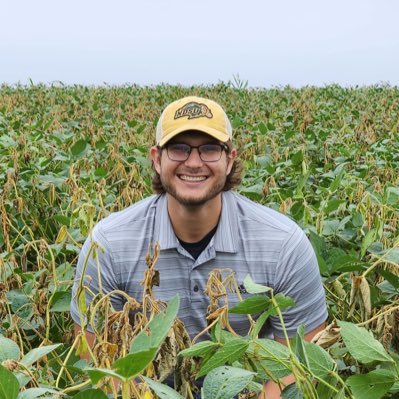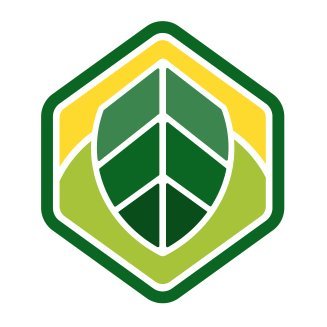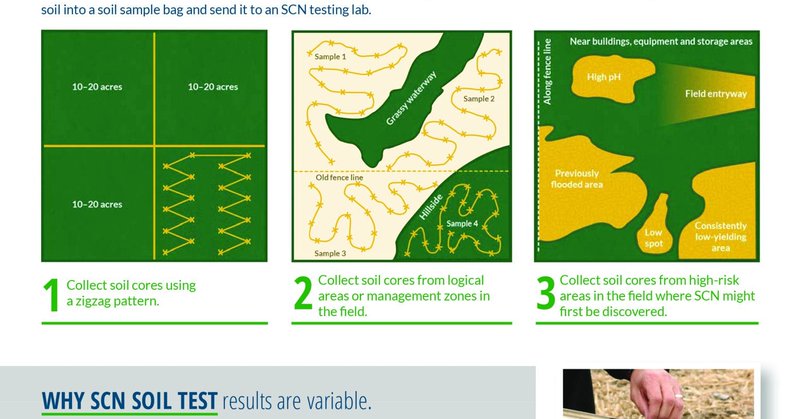
Wade Webster
@BisonBeanDoc
Followers
1K
Following
4K
Media
168
Statuses
2K
Assistant Professor of Soybean Pathology - North Dakota State University, @NDSUPlantPath
Fargo, ND
Joined October 2012
Is it obvious that genetics are important in managing white mold??
7
7
80
Weather can be used to predict disease in field crops. Bookmark the Crop Disease Forecasting Tool for the 2026 field season at https://t.co/eM7HWwAIuM.
@badgercropdoc @BisonBeanDoc @Ag_PMT @UWMadScience @tjcksn @alisonrISU @DTelenko @MartinChilvers1 @baldpathologist
0
16
31
Soybean Cercospora leaf blight disease cycle. This disease reduced soybean yield by more than 3.3 million bushels in 2024. Extension has resources at https://t.co/NBQK2iulo5
@ppp_trey @baldpathologist @LSUAgCenter @travisfaske @dsmuelle @ISU_IPM @SpurlockLab @T_birdPathology
0
22
34
Think you might have Soybean Cyst Nematode (SCN)? 🕵️♂️ The North Dakota Soybean Council’s SCN sampling program can help you find out- for free! Learn how to sample, when to test, and what your results mean. 🌱 Learn more: https://t.co/bbQaaT17Mr
0
1
2
🌱@NDSUExtension Getting It Right in Soybean Production webinar is on Dec. 3! 🌱 Hear the latest research and practical tips from soybean experts for a successful 2026 season. Register at https://t.co/8x2eUlx6Tf.
ndsu.edu
Getting It Right is an annual crop production conference featuring the latest research-based production information presented by NDSU specialists.
What challenges could #soybean growers face in 2026? Join us for the Getting It Right Soybean Production webinar, December 3, to find out. https://t.co/wnHmSuethm
0
1
1
“The impact of plant diseases on soybean...was estimated across 29 states and Ontario, Canada from 2020 to 2024...Diseases reduced soybean yield by an estimated 1.2 billion bushels...valued at $14.6 billion USD for the survey period. Per acre, this estimated mean economic loss
0
22
30
Great resource to see disease loss estimates on soybeans for the past 5 years!
“The impact of plant diseases on soybean...was estimated across 29 states and Ontario, Canada from 2020 to 2024...Diseases reduced soybean yield by an estimated 1.2 billion bushels...valued at $14.6 billion USD for the survey period. Per acre, this estimated mean economic loss
0
5
5
#SCN can adapt to repeated use of the same resistant soybean variety. 🛡️ The fix? ✔️ Rotate your crops ✔️ Rotate your SCN-resistant varieties ➡️ Break the cycle & defend your yield! #StopSCN. Know. Test. Defend. Learn more: https://t.co/fu5FRuKblE
0
2
5
“[Soybean cyst nematode] populations are slowly but steadily overcoming the resistance genes from the PI 88788 source of resistance and to a lesser extent Peking. Thus, it is critical that soybean growers rotate the sources of resistance in varieties they select.” From the
1
18
46
I hear all the cool kids are sampling for SCN this fall
When was the last time you tested for Soybean Cyst Nematode? Six years ago? Maybe ten? Never? We recommend testing your soil for #SCN every 3-4 years. Regular testing gives you the information you need to make management decisions that protect your yield. How and where to test
0
0
8
When was the last time you tested for Soybean Cyst Nematode? Six years ago? Maybe ten? Never? We recommend testing your soil for #SCN every 3-4 years. Regular testing gives you the information you need to make management decisions that protect your yield. How and where to test
1
3
7
The ideal time to sample for SCN is in the late season (September–October), either just before or shortly after harvest, when egg levels in the soil are at their peak and give the most reliable estimate of population pressure. https://t.co/jOuZg2DHkA
0
4
6
Webster Lab got the last of our trials harvested today in Fargo.
1
1
10
You are the greatest asset to your operation. 🌾 Caring for your health and well-being is just as important as caring for your land, livestock, and crops. Stress is real. So is support. Stress management resources https://t.co/rE9PDAd4b3
#LetsTalkAboutIt #FarmStress
0
5
9
🧐Something's missing........ oh....we know.... soil tests for SCN west of the Red River Valley......... How to Sample https://t.co/jOuZg2DHkA Summary of Soybean Cyst nematode Survey: 2013-2024 https://t.co/5zzVofziZj
#soybeans #StopSCN
1
4
8
"The optimal time to sample for [soybean cyst nematode] is at the end of the soybean growing season, typically in September or October, either just before or after harvest." From the article https://t.co/V2zsFZjr1r by @BisonBeanDoc & Guiping Yan. @NDSUExtension @NDAgExpStation
1
17
32
Webster Lab crew has been out scouting North Dakota the past few weeks. Incredible amount of fields with white mold present this year. Not surprising with the moisture we saw this summer during most of flowering periods. But this will lead to lots of new inoculum for the future
0
3
13
Planting resistant varieties is the most effective way to manage anthracnose in alfalfa. Read more in the Overview of Alfalfa Anthracnose at https://t.co/Hs3GUmIyLN. From @DTelenko @BisonBeanDoc @badgercropdoc @cropdoc08 @KelseyFAndersen @MartinChilvers1 @MahDuffeck
0
7
19
🌱This fall, the ND Soybean Council & @NDSUExtension are offering free SCN soil sampling bags. Pick one up at your local Extension office and protect your fields for the future. 👉Learn more:
ndsoybean.org
Soybean Cyst Nematode is the #1 yield-robbing pest of soybeans in the U.S. What makes it so dangerous? It works below the soil, often with no visible symptoms. That means even “healthy-looking” fields could be losing profit. #StopSCN | Know. Test. Defend. Learn more:
0
2
1





